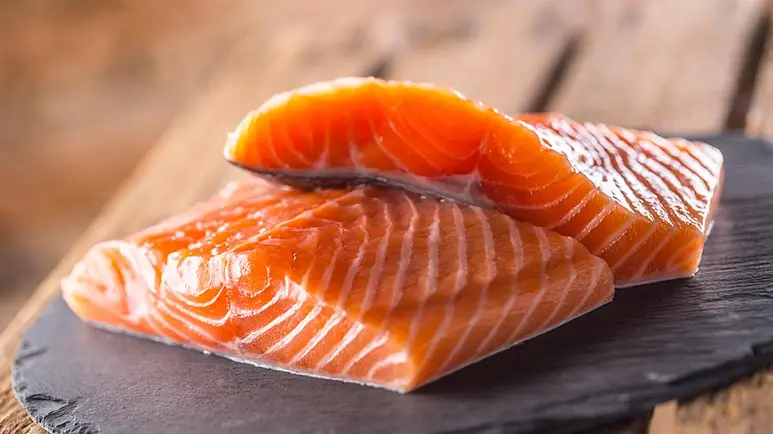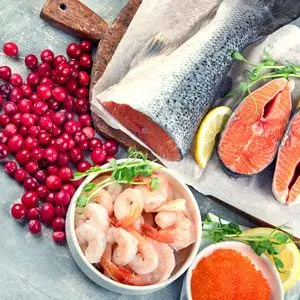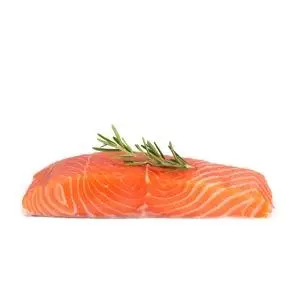Salmon: Your Pet Will Love This Omega-3-Rich Protein
Cooked gently and without seasonings, this protein alternative is rich in astaxanthin and omega-3 fats. Tip: Make sure to select wild-caught varieties for maximum benefits.

STORY AT-A-GLANCE
- Omega-3 fatty acids in the form of DHA (docosahexaenoic acid) and EPA (eiocosapentaenoic acid) are the most important nutrients found in wild-caught salmon
- Astaxanthin is also an anti-inflammatory antioxidant found in this seafood. This carotenoid, which gives salmon its pink flesh, is a powerful nutrient with anticancer, antidiabetic and anti-inflammatory properties
- When feeding wild-caught salmon to pets, make sure to cook it gently before giving it to them. Poaching is the safest way to preserve the delicate fatty acids. Avoid frying, as doing so may destroy the valuable nutrients in salmon
Editor's Note: This article is a reprint. It was originally published September 16, 2020.
It’s rare for any cat to dislike fish, and when it comes to the best choices, organic wild-caught salmon is one of the most recommended varieties out there. Wild-caught salmon is a healthy protein source for humans, but can you feed it to cats as well? How about dogs?
The good news is that salmon can be a fantastic treat for your pets, or it can be part of their biologically complete, species-appropriate diet. When given as a snack, salmon can constitute up to 10% of your dog’s or cat’s overall daily caloric intake. In fact, wild-caught Alaskan salmon has been dubbed a nearly perfect food, mainly because of its nutrition profile.
Where Do Salmon Live?

Salmon are anadromous — this means they can thrive in both fresh and salt water.1 There are seven species, but only Atlantic salmon live in the Atlantic Ocean, along the eastern coast of North America and in Europe. The rest live along the western coast of North America and eastern Asia.2

Wild-Caught Salmon Is Rich in Omega-3s
Omega-3 fatty acids in the form of DHA (docosahexaenoic acid) and EPA (eiocosapentaenoic acid)3 are among the most important nutrients found in this food. Since pets lack the enzymes necessary to convert plant-based omega-3 sources, such as hemp, chia and flaxseed, into DHA, it’s important to feed your pets DHA and EPA from animal sources, and salmon is a great choice.
These healthy dietary fats are recognized as essential for feline and canine diets, as they help maintain skin and coat health, modulate inflammation4 and support heart health.5 Being deficient in omega-3s can also contribute to vision problems, arthritis, allergies and cognitive dysfunction.
Salmon Contains the Potent Antioxidant Astaxanthin
Astaxanthin is an anti-inflammatory antioxidant also found in salmon.6 This carotenoid, which gives wild-caught salmon its pink flesh and krill its bright red color, is a powerful nutrient with anticancer, antidiabetic and anti-inflammatory properties.7
In one study conducted on young and old female beagles, the researchers noted that astaxanthin supplementation improved the animals’ mitochondrial function. In the older dogs in particular, astaxanthin increased ATP production, mitochondria mass and cytochrome c oxidoreductase activity.8
Another benefit of astaxanthin is that it provides antioxidants to parts of the body that don't normally receive a lot of this nutrient. It can cross the blood-retina and blood-brain barriers, meaning it potentially minimizes the risk of diseases of the central nervous system, the spinal cord and the eye.
Did You Know?

Astaxanthin, which is found in other seafood,9 is known as the “king of the carotenoid family.”10 It’s a naturally occurring, nontoxic source of vitamin A that is hundreds of times more potent than vitamin E and 10 times more potent than beta-carotene, lutein and zeaxanthin.11
Salmon Can Be a Good Alternative to Other Protein Sources
Salmon’s protein content can rival that of beef’s — a 100-gram serving contains 19.8 grams of protein,12 which is slightly higher than beef’s 19.4 grams13 in the same serving size. According to the American Kennel Club, salmon is an advisable protein alternative for dogs that are allergic to chicken and other common types of protein. Here’s what they say:14
“Salmon is a great source of omega-3 fatty acids, which support the immune system, may decrease inflammation, and can keep your dog’s coat looking shiny and healthy. It’s also a good protein source. In fact, salmon is a common ingredient in high-quality dog foods. If your dog is allergic to more common sources of protein, like chicken, salmon may be a good alternative.”
How to Feed Salmon to Your Pets
When feeding salmon to pets, especially dogs, make sure to cook it gently first (more on this later). Ideally, cook salmon at a low, regulated temperature that helps lock in the moisture and flavor of the food. Poaching is the gentlest way to preserve the delicate fatty acids. Avoid frying and broiling as these cooking methods may destroy the valuable nutrients in the salmon15 and create Maillard reaction products (unhealthy byproducts of high-heat cooking that aren’t healthy to consume).
The best type of salmon for pet treats or homemade, nutritionally complete pet food is fresh, unprocessed salmon. While canned salmon is convenient, most brands often contain very high amounts of sodium, which is not safe for felines. Smoked salmon is equally problematic, since it’s often cured with salt and has excessively high levels of sodium nitrate as well.16 Always check the label when buying canned salmon products.
Seafood, including salmon, is a rich source of iodine, which is required by dogs for adequate thyroid hormone production. Consumption of iodine-rich foods, including seafood-based diets, should be avoided for cats as it’s a contributing factor to hyperthyroidism.
Wild-Caught Alaskan Salmon Is a Superior Choice
"When buying salmon, make sure to purchase wild-caught varieties, and not those raised in fish farms."
This is because fish farms cause many of the same problems as concentrated animal feeding operations (CAFOs) on land. These animals are raised in crowded pens in the ocean, where their excrement and food residues are disrupting local marine life. Farmed salmon is also high in pollutants. According to a global assessment published in the journal Science, cancer-causing PCB concentrations in farmed salmon were significantly higher than in wild salmon.17
Salmon Fun Fact

You can easily tell apart wild-caught salmon from farmed varieties just by looking at the flesh. Wild sockeye salmon has a bright red flesh, thanks to its natural astaxanthin content. It's also very lean, so you’ll see thinner fat marks, or the white stripes, in the meat. If you see salmon that is pale pink with wide fat marks, then it’s likely farmed.
Why You Should Cook Salmon Before Feeding It to Dogs
One important thing you should remember when giving salmon-based snacks, treats or food to dogs is to make sure the fish is thoroughly cooked. This is because canids, which include domestic dogs, foxes and wolves, belong to the only animal family that is susceptible to salmon poisoning disease.
This potentially fatal illness18 is caused by the organism Neorickettsia helminthoeca, which embeds with Nanophyetus salmincola, a fluke present in anadromous fish (fish that swim upstream to spawn). Despite its name, other types of fish like trout, lamprey and sturgeon can also carry this illness.
When a dog consumes infected fish raw, the larval flukes release the rickettsiae organisms. These organisms then travel through the bloodstream and go to the liver, lungs, brain and lymphoid tissues, where they can cause necrosis, hemorrhage and hyperplasia.
Freezing the fish meat for several days can inactivate the pathogenic organisms, so if you really want to feed raw salmon to your dog, you should deep-freeze the meat at a temperature of -4 degrees Fahrenheit (-20 degrees Celsius) for at least seven days.19 If you want to err on the side of caution, gently cook the salmon before giving it to your pet.
Sources and References
- 1 WWF, March 19, 2015
- 2 Animals Network, Salmon
- 3 The World's Healthiest Foods, Salmon (Archived)
- 4 Journal of the American Veterinary Medical Association, December 1, 2007
- 5 J Small Anim Pract. 2010 Sep;51(9):462-70
- 6 Cancer Letters, 2009 Sep 28;283(1):108-17
- 7 Molecules, 25, 5342; October 2020
- 8 J Anim Sci. 2013 Jan;91(1):268-75
- 9,11 Mar Drugs. 2014 Jan; 12(1): 128–152
- 10 TRACE, Astaxanthin: A Comparative Case of Synthetic VS. Natural Production, 2013
- 12 USDA Food Data Central, Fish, salmon, Atlantic, wild, raw (Archived)
- 13 USDA Food Data Central, Beef, grass-fed, ground, raw (Archived)
- 14,18 American Kennel Club, September 1, 2022
- 15 Best Tips For Pets, Baby, Kittchen, October 1, 2020
- 16 Feline Living, Can Cats Eat Salmon? Is It A Superfood For Felines Too? January 29, 2024
- 17 Science, January 9, 2004 Vol 303
- 19 FDA, Fish and Fishery Products Hazards and Controls Guidance











